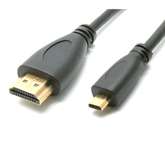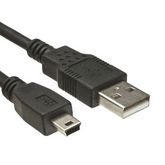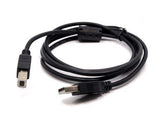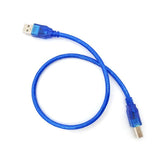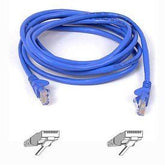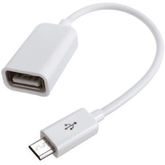Types of Cables: Working & Their Applications
Summary
Are you curious about the world of cables and their fascinating applications? Look no further! Our latest blog takes you on an electrifying journey through the fundamentals of cables. Discover the essence of electrical cable construction and unravel the secrets behind their seamless operation. Delve into the realm of electric cable size charts, empowering you with knowledge to make informed decisions. Explore the vast array of cable types and their diverse applications in various industries. Get ready to be captivated by this informative and engaging blog, as we unlock the wonders of cables, inviting you to embrace their power and potential. Click here to dive into this electrifying adventure!
What is a cable?
Cables are an essential part of modern electrical systems. They are used to transmit electrical power and signals between devices and equipment. Cables are available in numerous types and are built using a diverse range of materials to cater to various applications and environments.
A cable is essentially a collection of one or more conductors, typically crafted from copper or aluminum. These conductors are insulated and enclosed within a protective outer sheath. Conductors are the material inside the cable that allows electricity to flow through it. Insulation is a material that surrounds the conductors and prevents electrical leakage. The outer sheath is a protective layer that surrounds the insulation, it protects the cable from damage and the environment.

Electrical cable construction:
Electric cables are typically constructed with a combination of materials, including a conductor, insulation, and a protective outer layer.

- The conductor is typically made of copper or aluminum and is responsible for carrying the electrical current. Copper is a more expensive option but has better conductivity, lower resistance, and a longer life span. Aluminum is a less expensive option, but it has a higher resistance and shorter lifespan than copper. The size of the conductor depends on the amount of current that is expected to flow through the cable.
- The conductor is surrounded by insulation, which is composed of various materials like PVC (polyvinyl chloride), XLPE (cross-linked polyethylene), rubber, and Teflon. These materials are carefully selected for their dielectric properties, flexibility, and ability to withstand heat, chemicals, and environmental factors. PVC is commonly utilized in residential and commercial settings due to its affordability and flame-retardant qualities. XLPE is favored in industrial and high-voltage environments for its exceptional insulation properties and resistance to high temperatures. Rubber and Teflon, on the other hand, find application in high-temperature settings such as power plants, as they possess the ability to endure extreme temperatures without degradation.
- Finally, the outer layer, or jacket, is made of materials such as PVC, rubber, and Nylon. This layer serves to protect the cable from damage caused by factors such as abrasion, moisture, and chemicals. PVC is a common choice for its low cost and flame-retardant properties. Rubber is often used in underground applications as it is resistant to water and chemicals. Nylon is used in high-temperature applications as it has a high melting point and is resistant to abrasion.
All the layers are assembled and then the cable is extruded, which is a process where the cable is pulled through a die under high pressure and temperature. This process helps to bond the layers together and gives the cable its final shape.
Cables can also have additional layers like metallic screens, braids, or shields to protect from external electromagnetic interference and also from internal interference from adjacent conductors.
In general, the construction of an electric cable is carefully engineered to guarantee the safe and efficient flow of electrical current from one location to another. Simultaneously, it aims to shield the cable from potential damage and external influences that could compromise its performance.
Working:
An electric cable works by allowing the flow of electrical current through its conductor. The conductor, usually composed of copper or aluminum, plays a vital role in transporting electrical current between two points. This current is produced by an electrical source like a battery or power grid, and it travels through the conductor to power an electrical load, such as a light bulb or motor.
The insulation surrounding the conductor serves to prevent electrical current from leaking out of the cable. The insulation is made of materials such as PVC or rubber and is designed to maintain a safe level of electrical resistance to protect the current from leaking out and also to prevent external electrical interference or short circuits.
The protective outer layer, or jacket, is made of materials such as PVC or rubber and serves to protect the cable from damage caused by factors such as abrasion, moisture, and chemicals. It also helps to provide mechanical strength to the cable.
The flow of electrical current through the conductor generates a magnetic field around the cable. Some cables are designed with additional layers like metallic screens, braids, or shields to protect from external electromagnetic interference and also from internal interference from adjacent conductors.
Electric cable size charts:
Cable sizes are determined by the cross-sectional area of the conductors. The size of the conductors is expressed in American Wire Gauge (AWG) or square millimeters (mm²). The larger the conductor, the more current it can carry. In general, the larger the conductor size, the more expensive the cable will be.
|
Cross Section (mm2) |
Approximate Overall Diameter (mm) |
Current Rating |
|
|
Single Phase (Amps) |
Three Phase (Amps) |
||
|
1.5 |
2.9 |
17.5 |
15.5 |
|
2.5 |
3.53 |
24 |
21 |
|
4 |
4.4 |
32 |
28 |
|
6 |
4.68 |
41 |
36 |
|
10 |
5.98 |
57 |
50 |
|
16 |
6.95 |
76 |
68 |
|
25 |
8.7 |
101 |
89 |
|
35 |
10.08 |
125 |
110 |
|
50 |
11.8 |
151 |
134 |
|
70 |
13.5 |
192 |
171 |
|
95 |
15.7 |
232 |
207 |
|
120 |
17.4 |
296 |
239 |
|
150 |
19.3 |
300 |
262 |
|
185 |
21.5 |
341 |
296 |
|
240 |
24.6 |
400 |
346 |
|
300 |
27.9 |
458 |
394 |
|
400 |
30.8 |
546 |
467 |
|
500 |
33.8 |
626 |
533 |
|
630 |
37.6 |
720 |
611 |
Types of cables:
There are many different types of cables available, each with its unique characteristics and uses. Some of the most common types of cables include:

- Power Cables: These are used to transmit electrical power from one device to another. They are typically made from copper or aluminum and have a high current-carrying capacity. Power cables are used in a wide range of applications such as power distribution, industrial machinery, and commercial lighting.
- Control Cables: These are used to transmit signals and control signals in industrial and automation applications. They are typically made from copper or aluminum and have a lower current-carrying capacity than power cables. Control cables are used in a wide range of applications such as industrial automation, process control, and machine control.
- Data Cables: These are used to transmit data and signals in computer and communication systems. They are typically made from copper and have a low current-carrying capacity. Data cables are used in a wide range of applications such as data communications, computer networks, and telecommunications.
- Fiber Optic Cables: These are used to transmit data over long distances using light. They are made from glass or plastic and have a very high data-carrying capacity. Fiber optic cables are used in a wide range of applications such as telecommunications, data communications, and computer networks.
- Coaxial Cables: These are used to transmit high-frequency signals such as television and radio signals. They are made of a center conductor surrounded by an insulating layer and an outer shield. Coaxial cables are used in a wide range of applications such as television and radio broadcasting, cable television, and satellite communications.
- Audio and Video Cables: These are used to transmit audio and video signals between devices such as televisions, DVD players, and amplifiers. They are typically made from copper and have a low current-carrying capacity. Audio and video cables are used in a wide range of applications such as home theater systems, public address systems, and musical instruments.
- HDMI cables: These cables are used to transmit high-definition video and audio signals between devices such as televisions and DVD players.
- USB cables: These cables are used to connect devices such as computers, printers, and smartphones to transfer data and power.
- Automotive Cables: These are used in cars to transmit power and signals between the battery, alternator, and other electrical components. They are typically made from copper and have a high current-carrying capacity. Automotive cables are used in a wide range of applications such as cars, trucks, and other vehicles.
- Marine Cables: These are specially designed cables that can withstand harsh marine environments such as saltwater and high humidity. They are used in a wide range of applications such as boats, ships, and offshore oil and gas platforms.
Applications:
Electric cables have a wide range of applications across various industries, including construction, transportation, telecommunications, and power generation. Some specific applications include:- Power transmission: Electric cables are used to transmit electrical power from power plants to homes and businesses. High-voltage power cables are used for long-distance transmission, while low-voltage power cables are used for distribution to homes and businesses.
- Building construction: Electric cables are used in the construction of buildings to supply power to lights, appliances, and heating and cooling systems. They are also used to connect various electrical systems, such as security systems, fire alarms, and elevators.
- Transportation: Electric cables are used in the transportation industry to power electric vehicles, buses, trains, and trams. They are also used in the aviation industry to power aircraft systems.
- Telecommunications: Electric cables are used in telecommunications to connect telephone lines and internet networks. Fiber optic cables are used for high-speed data transfer and are becoming increasingly common for internet connectivity.

- Industrial applications: Electric cables are used in industrial applications to power and control heavy machineries, such as factory equipment, cranes, and conveyors. They are also used in oil and gas exploration, mining, and other resource extraction industries.
- Medical equipment: Electric cables are used in the medical field to power and control medical equipment such as X-ray machines, MRI scanners, and monitors.
- Robotics: Electric cables are used in Robotics and automation systems to transmit power and control signals to robotic arms and other machines.
- Audio-Video systems: Electric cables are used in audio and video systems to transmit audio and video signals between devices such as televisions, speakers, and DVD players. HDMI, RCA, and speaker wires are some examples.

- Automotive: Electric cables are used in the Automotive industry for power and control signals for various systems such as lighting, audio, navigation, engine control, safety systems, and charging systems.
Conclusion
Understanding the world of cables is crucial in today's electrified age. We have explored what a cable is and its construction, delved into its working principles, and discovered the importance of electric cable size charts. Moreover, we have explored the vast array of cable types available, each designed for specific applications. From power transmission to telecommunications, cables are the unsung heroes that enable modern connectivity and provide the lifeblood of our technological advancements. So, whether you're an electrical enthusiast, a homeowner, or an industry professional, dive into the world of cables, and unlock the power to connect, innovate, and thrive. Explore the possibilities today!
If you appreciate our work don't forget to share this post and leave your opinion in the comment box.
Please do check out other blog posts about Popular electronics
Make sure you check out our wide range of products and collections (we offer some exciting deals!)
Frequently Asked Questions
1. What are the types of cables?
Here are different types of cables:
- Ribbon Electric Cables: Transmit multiple data simultaneously in computer systems.
- Shielded Cables: Protect from electromagnetic and radio frequency interference, commonly used in industrial settings or noisy areas.
- Twisted Pair Cables: Reduce interference and crosstalk, widely used for Ethernet and telephone systems.
- Coaxial Cables: Used for cable TV, broadband internet, and high-frequency signals.
- Fiber Optic Cables: Transmit high-speed data over long distances using light pulses, commonly used in telecommunications and data centers.
These are just a few examples; cable choice depends on factors like intended use, environment, bandwidth, and distance.
2. What are the uses of cables?
Cables serve various purposes across industries:
- Power Transmission: Transmit electrical power across homes, businesses, and industries using high-voltage power cables.
- Telecommunications: Essential for voice, data, and video transmission, especially with fiber optic cables for high-speed internet and long-distance communication.
- Networking: Ethernet cables establish wired connections for data transfer between devices in local and wide area networks.
- Audio and Video Connections: RCA, HDMI, and coaxial cables transmit audio and video signals between devices like TVs, gaming consoles, and audio systems.
- Industrial Automation: Connect sensors, actuators, and control devices in automation systems to transmit control signals and power.
- Automotive Applications: Provide electrical connections for engine control, lighting, audio systems, and communication in vehicles.
- Construction and Building Wiring: Electrical wiring for power outlets, lighting, appliances, and devices in residential, commercial, and industrial buildings.
- Medical Equipment: Transmit signals, power, and data in medical devices, supporting patient monitoring, diagnostic imaging, surgery, and lab instruments.
Cables have versatile applications, with specific types tailored for different conditions and requirements.
3. What are advantages of cables?
Cables offer several advantages over other forms of electrical connections. Here are some advantages of using cables:
- High bandwidth & speed (fiber optic cables)
- Noise immunity (EMI & RFI)
- Long-distance transmission (minimal loss)
- Durability & reliability (harsh conditions)
- Versatility (customizable)
- Safety (insulation)
- Cost-effective (long-distance, large data/power)
- Compatibility (various devices/systems)
Cables are preferred for reliable signal transmission, high-speed data transfer, and long-distance connectivity. Choose the right cable for specific requirements.
These are just a few examples; cable choice depends on factors like intended use, environment, bandwidth, and distance.



